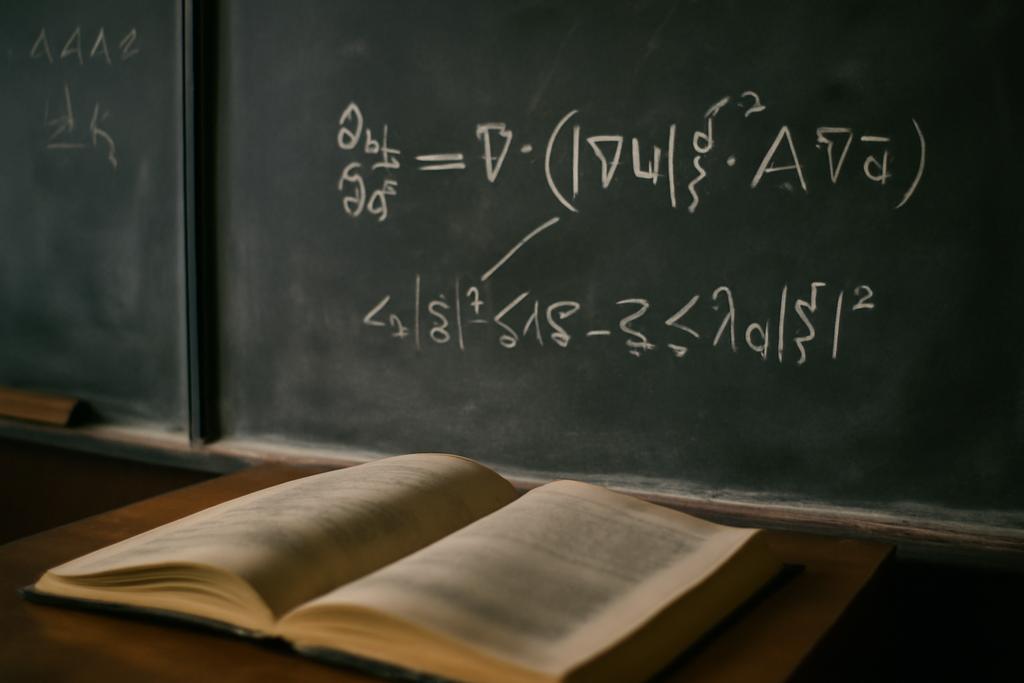Beyond Uniformity: The Challenge of Anisotropic Evolution
In the world of mathematical physics, equations often serve as the language describing how things change—how heat diffuses, how fluids flow, or how populations evolve. But what happens when the medium itself refuses to behave uniformly? When the rules of change differ depending on direction, and the evolution is governed by nonlinear forces acting in complex ways? This is the realm of fully nonlinear anisotropic evolution equations, a class of mathematical beasts that resist easy taming.
A team of mathematicians from Uppsala University and the University of Palermo—Antonella Nastasi, Emiliano Peña Ayala, and Matias Vestberg—have taken a significant step in understanding these equations. Their work, recently published, tackles the fundamental questions of whether solutions to these equations exist, whether they are unique, and how they compare to one another under certain conditions.
Why Anisotropy and Nonlinearity Matter
Imagine a forest where the wind blows stronger east-west than north-south, or a crystal that conducts heat differently along different axes. These are examples of anisotropy, where properties depend on direction. Now, add to this the twist that the rate of change depends on the current state in a nonlinear way—meaning doubling the input doesn’t just double the output, but can change it unpredictably. This doubly nonlinear behavior complicates the mathematical landscape.
Such equations are not just abstract curiosities; they model real-world phenomena like the flow of non-Newtonian fluids, underground water movement, and even complex diffusion processes in materials science. Yet, despite their importance, the mathematical theory lagged behind, especially when both anisotropy and double nonlinearity come into play simultaneously.
The Core Breakthrough: Existence and Uniqueness Under New Conditions
The researchers focused on a class of equations where the evolution depends on spatial derivatives raised to different powers in each coordinate direction—capturing anisotropy—and where the solution itself appears in nonlinear ways. They proved that under a closeness condition on the exponents—essentially requiring that the nonlinearities in different directions are not wildly different—a solution to the problem exists.
More surprisingly, they showed that a certain power of the solution, denoted as um, has a well-defined gradient, a property not obvious from the outset. This regularity unlocks the door to defining solutions rigorously and analyzing their behavior.
They also established a comparison principle: if you have two solutions, one starting below the other on the boundary of the domain, then this ordering persists throughout the entire domain and time interval. This principle is crucial because it implies uniqueness—there can be only one solution matching given initial and boundary conditions.
Why This Is Harder Than It Looks
At first glance, comparison principles might seem straightforward, but in the doubly nonlinear anisotropic setting, they are notoriously tricky. The main obstacles include the lack of smoothness in time derivatives and the behavior near points where the solution approaches zero. The coefficients of the equation depend on the solution itself, and the nonlinearities differ in each spatial direction, making classical tools insufficient.
The authors navigated these challenges by carefully constructing approximations of the problem, proving uniform bounds, and employing sophisticated functional analysis techniques. They used mollifications in time—smoothing operations that respect the equation’s structure—to handle weak derivatives and time continuity. Their approach builds on and extends previous work that dealt with isotropic or singly nonlinear cases.
Implications and the Road Ahead
This work fills a gap in the mathematical theory of nonlinear anisotropic evolution equations, providing a solid foundation for further study. With existence and uniqueness established under realistic assumptions, researchers can now explore finer properties of solutions, such as their long-term behavior, stability, and numerical approximations.
Moreover, the techniques developed here may inspire advances in related fields where anisotropy and nonlinearity intertwine—think of complex materials, biological tissues, or geophysical flows. Understanding these equations better could lead to improved models and simulations, impacting engineering, environmental science, and beyond.
Mathematics as a Lens on Complexity
At its heart, this research exemplifies how mathematics grapples with complexity—not by simplifying away the messiness of the real world, but by developing tools to understand it deeply. The anisotropic, doubly nonlinear equations studied here reflect systems where direction matters and interactions are nonlinear, echoing the intricate patterns we see in nature.
Thanks to the efforts of Nastasi, Peña Ayala, and Vestberg at Uppsala University and the University of Palermo, we now have a clearer picture of these challenging equations. Their work reminds us that even in the abstract world of partial differential equations, there is a rich story about how change unfolds when the rules themselves bend and twist with direction and intensity.










